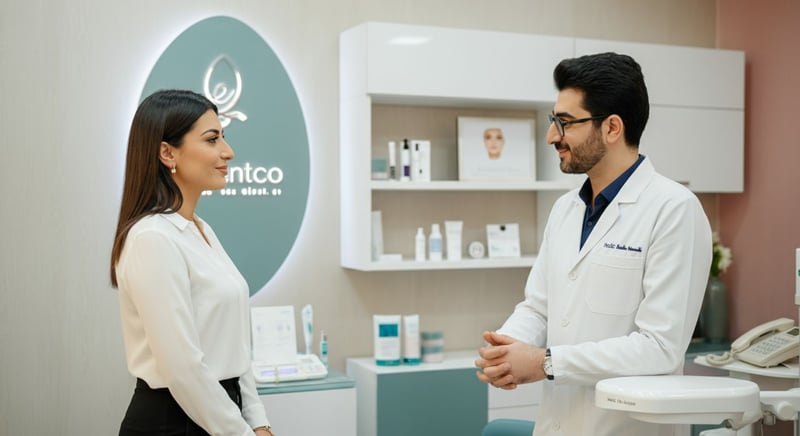Decoding 'Hello': A Guide to Global Greetings and Etiquette
Discover how greetings connect cultures; learn the art of 'hello' globally.
Greetings are more than just words; they are the doorway to polite interaction and cultural exchange. Across the globe, a simple 'hello' can open dialogues, create connections, and serve as a universal language. In this guide, we’ll explore the art of greetings around the world, diving into cultural nuances, formalities, and the ever-evolving etiquettes that shape our interactions. Whether you're traveling, forming a business relationship, or embracing friends old and new, understanding how to say ‘hello’ can make all the difference.
The Universal Language of 'Hello': More Than Just a Word
Cultural Nuances Embedded in a Simple Greeting
The word 'hello' serves as a fundamental cornerstone of communication, breaking barriers between speakers of different languages and cultures. But what does hello mean across diverse civilizations? In many regions, including English-speaking countries, it's a greeting to express openness and friendliness. But culturally, it often carries more profound meanings. For instance, in Japan, the greeting ‘Konnichiwa’ extends beyond a simple hello, embodying respect and mindfulness of the time of day. Similarly, the Hawaiian greeting 'Aloha' is not just a hello; it signifies love and compassion. Such greetings illustrate the rich layers hidden within a simple "hello", serving as a verbal handshake that often reflects cultural values and social norms. Delve deeper, and you’ll find that learning how to say hello in different languages is also learning a piece of a culture's heart.
Exploring Greetings Beyond Words
- Visual greetings, like a respectful nod or a bow, express acknowledgment and respect across cultures, setting a non-verbal tone for interactions.
- Tactile greetings, such as handshakes or cheek kisses, establish a physical connection and signal trust and friendliness, although customs vary geographically.
- Digital greetings are facilitated through advanced AI; they enhance virtual interactions by providing personalized, timely, and visually engaging experiences, fostering efficient communication and solidifying relationships, such as those used by aesthetics wallpapers businesses for customer relations.

From 'Hi' to 'Howdy': Navigating Casual and Formal Greetings
Etiquette Differences between a Casual 'Hey' and Formal "Hello"
The spectrum of greetings ranges from an informal "Hey," often seen among close acquaintances, to the more respectful "Good evening," typically reserved for formal settings. In business, the balance between casual and formal greetings has a significant impact on engagement. For example, the directness of a firm handshake with a full name introduction, common in many U.S. business environments, contrasts starkly with a simple nod and smile. In Germany, the formal ‘Sie’ is often maintained throughout initial conversations, emphasizing respect and formality. Understanding these nuances is key to navigating varied social environments and ensuring your greeting is received positively, whether you’re in a casual Texas "Howdy" scenario or a formal London "Hello." Greetings in digital interaction, such as those found between customers and nurse aesthetics service providers, can greatly impact the customer’s impression and brand loyalty.
Decoding the Greeting Landscape: A Practical Approach
- Initiate with Observation: Before you even approach, observe the environment - is it relaxed or structured? This sets your tone.
- Match the Formality: If others are using titles and surnames, follow suit. If it’s more relaxed, a simple "Hello" will suffice.
- Close with Grace: Always end the greeting appropriately, whether it’s a simple "Nice to meet you" or a more formal farewell, demonstrating courtesy.

Cultural Nuances: Mastering 'Hello' in Different Languages
Decoding Gestures and Phrases in Global Greetings
Each culture embodies unique ways of greeting. These distinctive approaches are vital to effectively master. In France, cheek kisses are standard greetings, while in India, a bow with 'Namaste' is customary. Greetings in China might include a nod or handshake, followed by ‘Ni hao’. Mastering greetings transcends word-exchanges; it is a dance of gestures intertwined with social and cultural cues. In Italy, a handshake and direct eye contact convey sincerity. Learning diverse greetings enhances one’s linguistic skills and cultural fluency allowing seamless interactions globally. Consider, for example, aesthetic wallpapers, where the first image a user sees could be considered a visual "hello", setting the tone for their entire experience. Grasping the local "hello" is the key to social acceptance and relationship-building, just as crucial in person as it is for creating digital grunge aesthetics.
Unspoken Rules of 'Hello': A Global Guide
- Physical distance: Notice how much space people keep when greeting, varying from the closeness of Latin American cultures to the distance preferred in some Asian countries.
- Gift-giving customs: Some regions expect small gifts during initial greetings, as a sign of respect and goodwill, while others might view this as presumptuous.
- Formality considerations: Prioritize respecting elders and superiors by using formal titles and greetings unless explicitly invited to use a more casual approach.

Beyond Words: The Art of a Meaningful Introduction
Enhancing Communication with Non-Verbal Cues
Greetings form the beginning of a meaningful introduction, where words often set the stage for deeper interaction. Crafting a thoughtful introduction goes beyond a simple word. It's about engaging with presence, where each phrase is tailored to the moment. Whether it’s introducing oneself in a social gathering, welcoming someone to an event, or beginning a professional meeting, there's an art to making it meaningful. This involves maintaining eye contact, using the person’s name, and displaying genuine interest in the conversation. These small acts bolster the verbal greeting with broader, more impactful gestures, showcasing a holistic approach to starting communication. For those looking to refine their introductions, practicing active listening and empathetic interaction can greatly enhance how your greetings are perceived, and in turn, the relationships they foster.
Key Steps to Effective Introductory Practices
- Eye Contact: Establish and maintain eye contact to convey sincerity and confidence, creating a direct and personal interaction.
- Name Utilization: Address individuals by their name to make them feel acknowledged and valued, enhancing the personal connection in initial interactions.
- Active Participation: Demonstrating genuine interest through open-ended questions encourages engagement and establishes a foundation for meaningful discussions during an introduction.
Mastering Global Greetings Through Cultural Understanding
Building Trust Through Culturally Sensitive Communication
Frequently Asked Questions
What does 'Hello' mean beyond a simple greeting, specifically "what does hello mean" culturally"?"
How do I navigate between casual greetings like "Hi" and more formal greetings like "Hello," and when should I use each?
Are there unspoken rules to follow when saying "hello," and how might cultural sensitivity affect my introduction?
How can I make an introduction more meaningful than just exchanging words when saying "hello"?
Achieve your aesthetic goals with estethica's personalized treatment plans!
📞 Book Your Free Consultation!